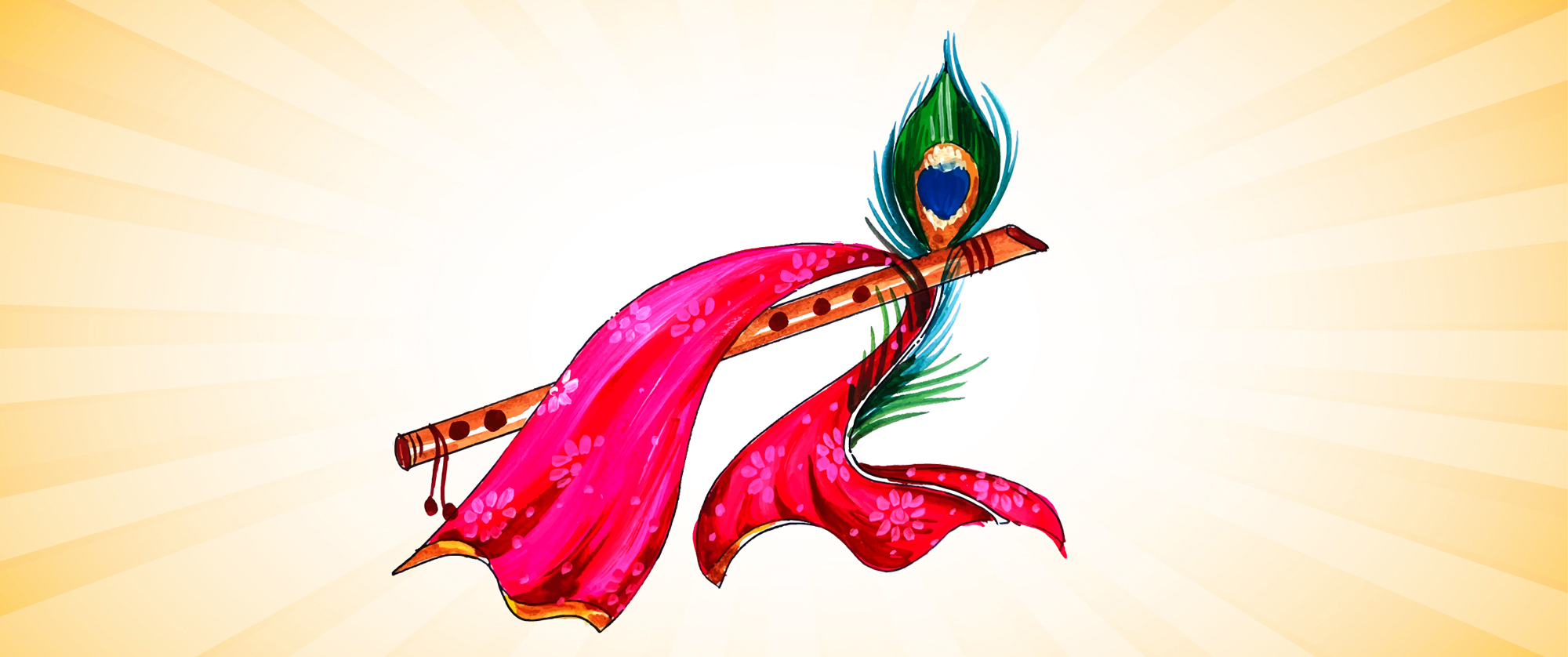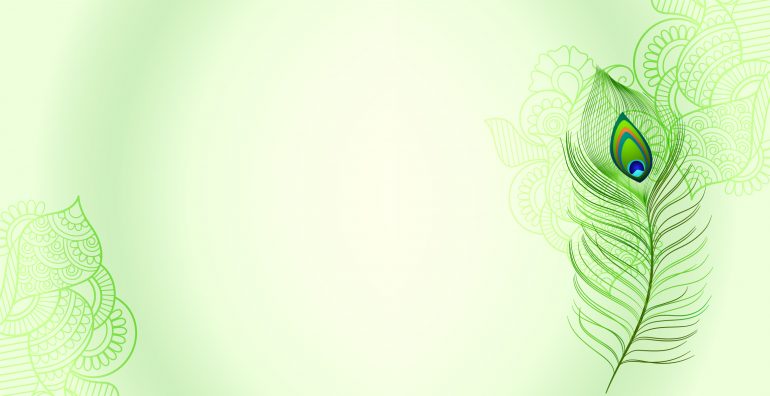Some of you have asked about the significance of the peacock feather on the cover of my new book Song Divine. You know how I love symbolism – so here it goes:
When studying the Bhagavad Gita it is easy to become enamored with Krishna, the God incarnate who speaks throughout much of the story. Krishna acts as a guide, a friend, an advisor and a mentor to Arjuna, who stands in as an “everyman,” representative of you and me.
Krishna is quickly recognizable. His blueish skin represents the infinitude of the sky. He plays a flute, fashioned out of a piece of bamboo. The reed is empty, yet when Krishna, the god of love, breathes life into it, the flute sings. This represents how the heart can also become an instrument of God, if we allow it. Our suffering and pain are like the holes in the bamboo flute. We can offer our heart to God, and allow beautiful music to be played.

Krishna always wears peacock feathers in his crown. There are many different stories for the reasons behind this. One is that the music of the heart can be expressed through the head. In the Gita, Krishna makes references to how knowledge and love, or head and heart, are needed together to fully express the divine. The peacock feather throughout the ages has been considered a sign of both beauty and knowledge. Beauty because it is indeed beautiful with its iridescent colors, and knowledge because it is in the form of an eye. Knowledge is acquired through observation, yet knowledge without love is cold and lifeless.
The peacock feather is rare in that it contains all of the seven colors. Krishna wears the feather to signify that this range of colors, as the range of colors of people in the world, is also in him. There’s a sweet story about how Krishna was playing his flute, and the peacocks circled around him and began dancing joyfully, carried away by the beautiful music. When Krishna stopped, the King of the peacocks presented feathers at Krishna’s feet in gratitude. Krishna accepted the feathers graciously and put them in his hair, and from then on he always wore a peacock feather on his head.
Some say that the peacock feather represents the extravagant beauty of Lord Krishna. Although Krishna has many ornaments of gold and jewels, he chooses to wear peacock feathers, flowers and leaves. Others say that peacock feathers represent purity. They believe that the peacock is the only animal in nature that observes complete chastity in life, with no lust in his heart. When a peacock is happy, he dances with his wings aflutter, and his eyes fill with tears. The Peahen drinks those tears to conceive.
In nature, it is very rare for a feather to look the same on both sides, but this is the case with the peacock feather. It is said that the eye of the feather protects a person from the “evil eye” and destroys all negativity, anger, greed, and jealousy. The dark colors represent sorrow and sadness, and the bright colors represent happiness. This symbolizes that life comes with both happiness and sorrow, and that when one follows Krishna we can attain equanimity of mind and accept all life has to offer.
The peacock is an important figure in many cultures, and it is the national bird of India, fully protected under the Indian Wildlife Protection Act.

Lissa Coffey is a lifestyle and relationship expert who serves up an inspiring blend of ancient wisdom and modern style. She appears frequently on television and radio, and contributes to national publications with her insightful and compassionate approach to modern-day issues. Coffey is also a bestselling author and has written books like “Song Divine: A New Lyrical Rendition of the Bhagavad Gita”. www.SongDivine.com.







